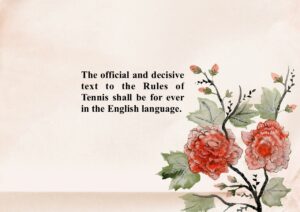When I started in on the best-of-three and best-of-five set rules for matches, I mentioned that the format is inextricably linked to gender politics. In two previous posts I touched on the point that the length of women’s matches frequently comes up in the proximity debates over equal prize money. Before leaving this topic, I decided to perform some data analysis of my own to see if the argument has any merit.
I somewhat arbitrarily selected the 2020 Australian Open for analysis. It makes sense, as it is the most recent major to be conducted. As of this writing it is the only major tournament to be played in the current year. Probably I should examine more tournaments than just one, but remember kids… I have a day job.
I scraped the scores and match running times for the 2020 Australian Open men’s and women’s singles draws off the official tournament web page. A 128 player draw requires 127 matches to declare a champion. This is what is awesome about tournament tennis. A match is required to vanquish every player in the draw, save the champion. The vast majority of players lose their last match at a tournament.
I threw out retired matches and walkovers, though there weren’t many in this year’s Australian Open. The primary reason for removing those matches is because I couldn’t figure out an easy yet equitable way to normalize those data points.
Cue the drum roll. The average length of a set, as played in the 2020 Australian Open Women’s Singles draw, was a mere 42 minutes and 2 seconds. This means that the average straight set women’s match would last well under an hour and a half. That’s short, even by recreational league standards.
Moving over to the Men’s Draw, the average set length clocked in at 41 minutes and 52 seconds. I was not told that math would be required for the writing of this blog, but that average is 10 seconds shorter than for the ladies. Statistically, that’s a dead heat. I would also point out that the men’s numbers include Rafael Nadal pushing the limits of time between points. Without Rafa, the difference might have been even more pronounced.
I do not subscribe to the theory that match length equates to quality of play, but that is the argument that seems to surface with great regularity in gender pay equity discussions. The data for the 2020 Australian Open suggests that if the women played best-of-five or if the men played best-of-three that the match lengths would be comparable. Of course, we will never know because apparently it isn’t going to happen.
The logical next step would be to examine numbers from events when the men and women play the same number of sets, i.e., best-of-three, under comparable conditions. The BNP Paribas Open at Indian Wells would have been the perfect canvas for that. Alas, the Coronavirus has robbed us of that opportunity this year.
- Women’s Demands for Equality in Money Are Threatening $11 Million Tennis Tour, Neil Amdur, New York Times, September 14, 1976, viewed March 3, 2020.
- Five-set women’s final plan scrapped, Alan Attwood, The Sunday Age (Melbourne, Australia), August 3, 1994.



